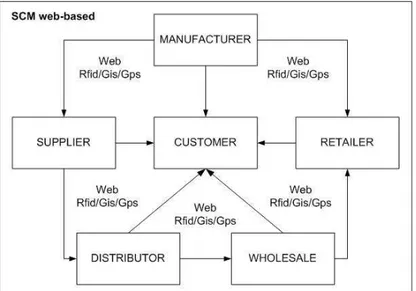A Layered Software Architecture for the
Management of a Manufacturing Company
Domenico CONSOLI
Department of Economics, Society, Politics University of Urbino, Italy
domenico.consoli@uniurb.it
In this paper we describe a layered software architecture in the management of a manufactur-ing company that intensively uses computer technology. Application tools, new and legacy, after the updating, operate in a context of an open web oriented architecture. The software architecture enables the integration and interoperability among all tools that support busi-ness processes. Manufacturing Executive System and Text Mining tools are excellent interfac-es, the former both for internal production and management processes and the latter for ex-ternal processes coming from the market. In this way, it is possible to implement, a computer integrated factory, flexible and agile, that immediately responds to customer requirements. Keywords: ICT, Service Oriented Architecture, Web Services, Computer-Integrated Factory, Application Software
Introduction
We define ICT-intensive enterprise a company that makes a heavy use of computer technologies in both management and pro-duction processes. In this type of company, internal and external processes are complete-ly automated in a web-oriented and open in-frastructure that provides an integrated and interoperable architecture. In a global market to be competitive, the enterprise must be agile and efficient in the management of the information flow. Agility [1] means high flexibility, thin structure, rapid response and high speed in the processing and transmis-sion of information.
Actually, inside companies, there are a lot of software that are used stand-alone and it is necessary to create a cooperation environ-ment where different tools can exchange use-ful data.
In this paper we describe an original layered software architecture, open and service-oriented, to integrate and make interoperable any business process.
The software that interfaces management and production tools is the Manufacturing Execu-tive System (MES) [2] while a software of Text Mining [3] is a software that interfaces external textual information and Enterprise Resource Planning (ERP) or Enterprise Con-tent Management (ECM). By these tools it is
possible to implement a Computer Integrated Factory (CIF) that automates the manage-ment of internal and external business processes.
The paper is structured as follows: in the next section we show the literature and software evolution while in the third section a soft-ware infrastructure of an ICT-intensive en-terprise is presented. In the next three sec-tions respectively, Technology, Application and Network Layer are discussed. Then an application example of the model is shown. Finally some conclusion is drawn.
2 Literature review
Application software, used inside companies, can be classified in two classes: Management Software (MS) or Enterprise Content Man-agement (ECM) to manage business informa-tion and Industrial Software (IS) to automate productive cycle.
Inside enterprises, there are different types of business contents, from a generic document to a complex report, that could reside in In-ternet, intranet or in stand-alone computers. Over time, in the Office Automation, from simple spreadsheets as Visicalc we passed in advanced programs of Office Productivity Tools (OPT). The monomedia static docu-ment of the past were overcome from a dy-namic multimedia and collaborative
ment where everyone can express own re-views and make a cooperative workgroup like to Computer Supported Cooperative Work (CSCW) [4]. Nowadays the world is interconnected, people work in teams, colla-borate on projects distributed around the globe. Groupware is a flexible and customiz-able software that supports and encourages teamwork, exploits the network infrastructure and facilitates the automation of document flows.
The Workflow Management System (WFMS) [5] was born in 80s as trend of of-fice systems and it is integrated into processes that manage, trace the revisions and the entire production cycle of business documents from the creation to the diffusion at different units. Software modules are wedged like to an ordered assembly line that distributes information [6].
The birth of Enterprise Resource Planning (ERP) [7], in 90s, allowed to companies to manage, synchronize and integrate business functions optimizing available resources. The ERP is primarily an organizational and ma-nagerial method to optimize operational ac-tivities of a manufacturing company. ERP manages customized orders and integrates business cycle and all aspects of the business: planning, manufacturing, sales, finance, pro-curement, logistics and marketing. ERP, working for processes, has led the enterprises to re-engineer deeply business processes by the Business Process Redesign (BPR) me-thodology [8]. The ERP allows the reduction of the delivery and cycle time and improves the response to customer needs [9]. The evo-lution of ERP in ERP II or Extended ERP (EERP) includes the Customer Relationship Management (CRM) and Supply Chain Man-agement (SCM).
Regarding the Industrial Software, the Ma-terial Requirement Planning (MRP) that planned material requirements, is evolved in the Manufacturing Resource Planning (MRPII), that added to materials’ supply the planning of resources involved in the produc-tion scheduling.
The diffusion of microprocessors (mid-70s) has facilitated the development of digital
Computer Numerical Control (CNC) ma-chines, Programmable Logic Controller (PLC) and Robot Control. All this has en-couraged the development of Computer Aided Technology (CaT): Computer Aided Design (CAD), Computer Aided Manufactur-ing (CAM) and Computer Aided Engineer-ing (CAE). The CAE software supports the engineering aspect like design calculations, definition of methods, timing, cycles and business tools.
Nowadays all CaTs can be integrated in the Product Lifecycle Management (PLM) [10] useful in the product collaborative develop-ment that involves many company’s partners. In recent years, to fully automate the produc-tion chain, many tools, hardware and soft-ware, are using: Robots, Flexible Manufac-turing System (FMS), Computer Integrated Manufacturing and Engineering (CIM/CIME), Modular Integrated Robotized System (MIRS). The flexible manufacturing system FMS has the ability to automatically produce different products changing only the executive program of machines. With the Computer Integrated Manufacturing (CIM) [11] the automation of the company, that combines all the business activities of plan-ning, design, production, warehousing and sales, is realized. The information flow is au-tomated from the arrival of an order to the delivery of the finished product.
Regarding the tools for the management of logistic processes we can consider the Intel-ligent Transportation System (ITS), Radio Frequency IDentification (RFID), Geograph-ic Information System (GIS) and Positioning System (GPS) based on mobile and wireless technologies for tracking the location of products and carriers.
3 The software infrastructure of an ICT-intensive enterprise
In modeling an ICT-intensive company, we take in consideration the following Software Infrastructure (Figure 1):
Fig. 1. Software Infrastructure in an ICT-intensive Enterprise
The digital infrastructure is the basic digital platform with PCs, standalone or linked in networking and operating systems.
Technological layer is an architecture, open, flexible and service-oriented. All software tools have a modular structure that recalls useful services for a particular business goal. The application layer is a set of software ap-plications that supports different functions and business processes.
The networking layer includes the software that interacts with external environment: cus-tomers, suppliers, partners and all market players.
The ICT-intensive company must have a ro-bust, integrated, interoperable and intelligent infrastructure where software modules can exchange data to automate, in an efficient and effective manner, business processes.
4 Technological layer of an ICT-intensive enterprise
The layer of an ICT-intensive manufacturing company uses an integrated, interoperable and intelligent service-oriented architecture (SOA) [12].
The SOA, platform in-depended, facilitates the interaction between different software, processes and business units. SOA increases flexibility and adaptability of different ser-vices that can be combined to satisfy
busi-ness requirements. The software is organized as a collection of services published on a web infrastructure and can be used by multiple applications.
Every process’ application, inside the enter-prise, is seen and considered as an internal service. For example a service could be the processing of an online order or the monitor-ing/ traceability of a product from the maga-zine to the final customer. In a context of Service Oriented Architecture (SOA) and Software as a Service (SaaS) or Cloud Com-puting, different services can be reused, mod-ified or combined (mash-up) to create new services for satisfying workload changes and the evolution of applications.
SOA exploit the web service technology [13] that allows the dynamic composition of busi-ness application using the web as a medium. The Service Open Architecture presents the following main components:
• Web Services (WS): collection of servic-es by a web technology. The servicservic-es in-teract with the calling program through input and output parameters
• Universal Description Discovery and In-tegration (UDDI): directory of available services (recorded and indexed)
• Simple Object Access Protocol (SOAP): protocol for the service request. It is a protocol independent from the platform and programming languages.
Web Services describe a collection of access-ible operations by an eXtended Markup Lan-guage (XML). The service provided by web services is described with a WSDL document and published into an UDDI repository that offers possibilities for dynamic collaboration. The framework SOAP transports the infor-mation contained in request messages and the processing method.
SOA supports also other processes:
• Discovery: finding suitable services for some goal
• Selection: finding the best available ser-vice
• Compensation: finding a service for mi-tigating undesidered effects
• Replacement: replacing a service with another one
• Design: invoking services from program
• Monitoring: controlling the execution of services
• Auditing: verifying that the execution of a service has followed a predetermined process
The web services framework also offers pos-sibilities for a flexible process integration. The Business Process Execution Language (BPEL), process’ orchestration language, provides possibilities for the integration of processes.
In the SOA context it is important the Enter-prise Service Bus (ESB). This bus has the goal to decouple the processes from the ser-vices and executes, in particular, the follow-ing functions:
• Routing: to direct the request of the ser-vice where it is actually available
• Protocol conversion: to transform, syn-tactically and/or semantically the proto-col; for example a service request via SOAP in an invocation of the service via Java RMI
• Data enrichment: to add some parame-ters required by the service that are not included in the request
The technological layer, that uses a web ser-vices architecture, is represented in Figure 2. The specific process (enterprise application) requires a service (Service Request) to SOA platform. The web service responds and acti-vates a Service Delivery. The system can monitor and track the service to prevent mal-functions.
Fig. 2. Delivery implementation by web services technology
Currently, inside the enterprise, it is neces-sary to consider new business requirements as a set of functions and services and pub-lishing them as web services.
Companies that decide to transfer on the web (part of) their applications and transactions must do so understanding that this operation
software components that can interact among themselves.
We must think to services as routines, which are available in the web, published in a direc-tory. Different users can use these services that can be variously combined. The integra-tion of services can be executed at interactive (controlled by users) or batch (controlled by process) levels.
The most common techniques of services processing are the filtering, which allows to use the output of a service as input to another one or the orchestration which uses the script language to control the sequence of an in-formation flow during the execution of a ser-vice.
To transform a legacy application in a web service, we can use appropriate wrappers which add useful information to the old code in order to expose it as a service.
In the future, in a context of the semantic web or web 3.0, the SOA will evolve in a Semantically-Enabled Service-oriented Ar-chitecture (SESA) [14]. With this advanced semantic-oriented architecture, we can use semantic web services as infrastructure and directly express problems as goal without re-quiring services for the solution of the specif-ic problem. Moreover we can model business processes as goals and support them by ap-plications dynamically assembled using the goal-based discovery.
5 Application Layer of an ICT-intensive enterprise
In this section, we analyze the application software that operates, as a service, in a SOA context. The legacy software is transformed in web services easily accessible via browser. Application software, as a set of services, used inside enterprise, can be classified in two classes: Management Software as Ser-vice (MSaS) to manage business information and Industrial Software as Service (ISaS) to automate the productive cycle. In Figure 3, that represents the Application Layer, we have classified the MSaS in main tools like to ERP, CRM, SCM and ISaS in CAD-CAM-CAE-PLM-FMS-SCADA-MEMSS.
Fig. 3. Application Layer
The module of Manufacturing Execution System (MES) allows to describe operational procedures for the manufacturing. MES is the digital “nervous system” capable to coordi-nate and synchronize production processes, the flow from ERP/PLM to production plant (FMS, PLC, Robots,...) and to distribute tasks to other sub-level systems.
MES receives information from ERP/PLM on working cycle and converts it in machine commands for production sequences.
This production system aligns more effec-tively areas of maintenance and production with business goals in order to optimize the asset performance management. MES inte-grates the production in the supply-chain and gives the visibility on what happens in the factory.
Thanks to this module it is possible to auto-mate the productive cycle inside a Computer-Integrated Factory (CIF) [15].
Fig. 4. Example of an application layer: a full automated factory
ERP, software application, manages and con-trols the entire enterprise. An ERP includes different modules supporting a variety of business functions such as finance, adminis-tration, logistics, manufacturing, marketing and so on. In a Computer-Integrated Factory (CFI) it is important the production ERP module that manages information on mate-rials (bill of material, suppliers and custom-ers order), production (scheduling and work-ing orders) and distribution (product deli-very, transportation and shipping). This module exchange data with other software of Computer Aided technology (CAD, CAM, CAE) and Supply Chain Management (SCM) like to Customer Relationship Management
(CRM) and Product Lifecycle Management (PLM).
PLM is an important corporate application. Generally the term "lifecycle" represents a set of steps for the product development: conception, design, planning, realization, dis-tribution and delivery. PLM manages all con-tributions and information exchange of glob-al participants, like to business partners, sup-pliers and customers. PLM increases com-munication, coordination and collaboration with partners of an extended enterprise and provides a collaborative space intercon-nected where stakeholders can access and collaborate, in real time, in products devel-opment.
Integrating these software modules of Man-agement Software we can obtain useful in-formation to control production plant: Flexi-ble Manufacturing System (FMS) and Shop Floor (SF) that represent the industrial soft-ware. The production plant includes FMS, PLC, Sensor/Actuator, shop floor (mechani-cal devices).
As shown in the Figures 3 and 4, the MES performs an essential task. It is a “bridge” be-tween management and industrial software allowing the transformation of business data in information useful to automate the manu-facturing.
In a Computer-Integrated Factory it is impor-tant the control and monitoring of electronic and mechanical devices at different levels (area, cell, machine,…) of the plant produc-tion by specific control software (Table 1):
Table 1. Software Control for plant elements
Manufacturing Plant Elements
Software Control
Area Supervisor Control and Data Acquisition
(SCADA)
Cell Flexible Manufacturing System
(FMS)
Machine Programmable Logic Control
(PLC/CNC)
Sensor/Actuator Sensor/Actuator Control
(S/AC)
Micro Electro-Mechanical System Software (MEMSS)
The first level of monitoring system is the Supervisor Control and Data Acquisition (SCADA) [16] that supervises the working productive area. The system SCADA manag-es and controls operating procmanag-essmanag-es in the fol-lowing stages: data processing, production and processes setting, alert management, re-sults analysis and screen visualization. The supervision is supported by web tech-nologies, accessible from user by web browser or mobile phone. In the SCADA level, real time requirements are reduced. These requirements are higher at lower level (mechanical devices).
Each device of production plant (FMS, PLC/CNC, sensor/actuator, mechanical de-vices and Micro Electro-Mechanical Systems (MEMS)) is equipped with an Ethernet card and presents an integrated web server as sin-gle point of access for the diagnostic, check and testing. The use of intelligent devices involves a closer interaction among processes and automation.
MEMS are miniaturized electromechanical systems of various kinds (mechanical, elec-trical and electronic) that are integrated on a single silicon substrate having the function of
sensor and actuator. By MEMS it is possible to start automatic assembly lines and produc-tion processes. In Table 1 we have named the software that manages MEMS as MEMS Software or MEMSS.
6 Networking Layer ICT-intensive Enterprise The networking layer is represented in Figure 5.
The ICT-intensive enterprise communicates with the external environment by a collabora-tive software that exploits web technologies and in particular web 2.0 (chat, forums, blogs,...) tools.
In the value chain, the collaborative software that manages the information exchange among all enterprise stakeholders, such as customers, suppliers, commercial partners and other companies, has become a key fac-tor and an important tool for acquiring com-petitive advantages, in an increasingly turbu-lent business environment.
Since the exchanged content, by different web 2.0 tools, has a textual format, it is im-portant to use a Text Mining software [17] to process this information and integrate it with the ERP software.
Text Mining (TM) (Figure 6) is a set of tech-niques obtained as a generalization and con-textualization of those used in Knowledge
Discovery in Databases (KDD) but with in-formation sources in textual format.
If textual data is transformed in structured data, Data Mining (DM) techniques can be applied.
Fig. 6. Text Mining
By algorithms of Data Mining (DM) [18] hidden relationship and useful knowledge are extracted from data contained in a data ware-house.
Since texts are written in natural language, to process and transform them in structured da-ta, it is very important to apply a specific pre-processing module.
The goal of this module is to obtain signifi-cant sentences and words for each text ex-pressed in a web post.
The preprocessing consists of the following main steps:
• Sentence extraction • Tokenization • Stemming • Lemmatization • Part of speech • Index terms selection
In the sentence extraction we extract the phrases that finish with a point, exclamation point or a question mark. Inside each sen-tence we eliminate all stop words such as comma, articles, prepositions and conjunc-tions.
In the tokenization stage, a sentence is di-vided into units called tokens [19] where each token is a word or something as a num-ber, a date, etc... The token boundary is represented by a white space (space, tab or the beginning of line).
The stemming extracts the root of single words, removing affixes and endings. For example inhibits, inhibition, inhibited have as common root the term inhibit.
Lemmatization aims to search single terms from the word ending. Respect to stemming phase the lemmatization must disambiguate different forms in a specific context. For ex-ample does the term songs derive from the verb sing or from the word song?
In the Part of Speech (PoS) every word of a sentence is labeled by a tag with the correct part of speech: article, noun, verb, adjective, etc. The tagging is a case of limited syntactic disambiguation. In the case of words that be-long to several syntactic categories, it deter-mines which of these categories is the most plausible in a given context.
In the index terms selection all those words as verbs, adverbs, pronouns, nouns, adjec-tives and nouns are taken in consideration and transformed in numbers and in particular in a (n x m) sentences-words matrix where the generic element wij represents the number of occurrence of a word j in a sentence i, with i = 1 .. n and j = 1.. m.
Therefore the output of the pre-processing phase is the representation of the document by a numeric array where will be possible to apply techniques of Data Mining.
Text Mining could use also modern semantic technology [20] to understand the significance of the text. In this case, to resolve the ambi-guities of the text we can define rules of grammar and semantics to understand the meaning of the words in individual sen-tences. In a semantic context it is important to use specific ontologies.
Soft-ware (MS). This knowledge is useful for Business Intelligence and Enterprise Appli-cations.
7 Application example of Layered Software Architecture
As a practical application of our layered framework we can consider the following example: the delivery of products from a manufacturing company to the final
custom-er. A specific request (SERVICE
REQUEST) for the product delivery (Tech-nological Layer) is sent to the SOA-oriented model. For the answer, the system must mon-itor all internal and external available carriers that are available to execute the PRODUCT DELIVERY. In this case, the software
inter-face (Application Layer) starts a scanning of all carriers working with the company (Net-working Layer). After the scanning it is poss-ible to find the available carrier. The delivery path is monitored by RFID/GIS /GPS tech-nology. Even in this case we use a software that interacts with external environment (Networking Layer).
Relationships among all subjects involved in the delivery task (supply chain management), in a web-services context, is represented in Figure 7 [21]. In this figure, the central sub-ject is the final customer. The customer may be served directly by manufacturer or indi-rectly by other players of the supply chain: supplier, distributor, wholesaler, retailer.
Fig. 7. A model of SCM supported by web technologies
It is important to annotate the direction of the arrows linking various actors. The customer can obtain products/services directly from the manufacturer or from subjects of next stag-es. All products and carriers are provided with RFID/GIS/GPS tags. Requests of ser-vice and delivery execution are implemented via web services.
By this model, we can obtain several advan-tages in terms of efficiency in the supply chain like to the optimization of the processes’ automation, reduction of delivery times and the monitoring of products and car-riers.
The sensor network, that monitors the opera-tions in real time, plays a crucial role to
im-prove the global system and in particular the information flows and performances.
8 Conclusions
dynamic interfaces like Manufacturing Ex-ecutive Systems and Text Mining represent important solutions. This software infra-structure supports the agility of enterprises. In a global and competitive context it is im-portant that companies respond quickly to the fast changing of the business environment. It is also important to process, in real time, use-ful information for problem solving and deci-sion making operations. The company must
know how to react quickly to unexpected sit-uations. The framework described in this pa-per is useful to implement a full automation inside the company, where all internal assets and global participants of the supply chain (business partners, suppliers, customers) can collaborate in the product development. In the future we think to develop some expe-rimental interface for the best implementa-tion of the model.
References
[1]D. C. Plummer and D.W. McCoy
“Achieving agility: The view through a conceptual framework”, Garter Re-search, 28 April 2006, pp. 1-5.
[2]J. Kletti “Manufacturing Execution Sys-tems”. In Springer-Verlag, NewYork, Inc., 2007, pp. 272.
[3]J. Gelernter and M. Lesk “Text mining for indexing”, In Proceedings of the 9th ACM/IEEE-CS Joint Conference on Dig-ital Libraries (Austin, TX, USA, June 15 - 19, 2009). JCDL '09. ACM, New York, NY, 2009, pp. 467-468.
[4]P. Liu, J.M. Laffey and K.R. Cox “Ope-rationalization of technology use and co-operation in CSCW”. In Proceedings of the 2008 ACM Conference on Computer Supported Cooperative Work (San Di-ego, CA, USA, 2008). CSCW '08. ACM, New York, NY, 2008, pp. 505-514. [5]C. Combi and G. Pozzi “Architectures
for a temporal workflow management system,” In Proceedings of the 2004 ACM Symposium on Applied Computing (Nicosia, Cyprus, March 14 - 17, 2004). SAC '04. ACM, New York, NY, 2004, pp. 659-666.
[6]M. D. R-Moreno, D. Borrajo, A. Cesta and A. Oddi “Integrating planning and scheduling in workflow domains”, Ex-pert Systems With Applications Volume: 33, Issue: 2, August 2007, pp. 389-406. [7]J. Yongjean and Y. Ki-Heung “A study
on an environment of ERP introduction”, Info-tech and Info-net, Proceedings ICII, vol. 6, 2001, pp. 84- 89.
[8]M.-Y. Cheng, M.-H. Tsai and Z.-W.
Xiao, “Construction management
process reengineering: Organizational human resource planning for multiple projects”, Automation in Construction Vol. 15, Issue: 6, November, 2006, pp. 785-799.
[9]S. P. N. Celeste, G.G. Gable and T. Chan “An ERP-client benefit-oriented main-tenance taxonomy”, J. Syst. Software. 64, 2 November, 2002, pp. 87-109. [10]D. Consoli "The Product Lifecycle
Man-agement in the Enterprise 2.0”. In Pro-ceedings of the International Conference on ICMMS 2008, Imperial College Press, 2010, pp. 27-32.
[11]S. V. Nagalingam and G. C. Lin, “CIM-still the solution for manufacturing in-dustry”, Robot. Comput.-Integr. Manuf. Vol. 24, No. 3, June 2008, pp. 332-344. [12]A. Dan, R.D. Johnson and T. Carrato
“SOA service reuse by design”. In Pro-ceedings of the 2nd international Work-shop on Systems Development in SOA Environments, Leipzig, May 11 - 11, 2008, SDSOA '08. ACM, New York, NY, 2008, pp. 25-28.
[13]Q. Yu, X. Liu, A. Bouguettaya and B. Medjahed “Deploying and managing Web services: issues, solutions, and di-rections”. VLDB Journal 17, 3 (May. 2008), pp. 537-572.
[15]D. Consoli, "The Product Lifecycle Management in the Enterprise 2.0". In 1th International Conference on Man-agement and Marketing Sciences, Athens, Greece, May 23-25 2008, Mar-keting and Management Sciences: Pro-ceedings of the International Conference on ICMMS 2008 edited by Theodore E Simos, Damianos P Sakas & Nikolaos Konstantopoulos, Imperial College Press, 2010, pp. 27-32.
[16]T. Kilpatrick, J. Gonzalez, R. Chandia, M. Papa and S. Shenoi “Forensic analy-sis of SCADA systems and networks”. Int. J. Secur. Netw. 3, Inderscience Pub-lishers, 2 (Feb. 2008), pp. 95-102.
[17]M. W. Berry and M. Castellanos editors, Survey of Text Mining II: Clustering, Classification, and Retrieval, Springer, 2007, pp. 254.
[18]L.A. Kurgan and P. Musilek “A survey of Knowledge Discovery and Data
Min-ing process models”. Knowl. Eng. Rev. Vol. 21, No. 1, Mar. 2006, pp. 1-24. [19]J. J. Webster and C. Kit “Tokenization
as the initial phase in nlp” in Proceed-ings of the 14th conference on Computational linguistics, Morristown, NJ, USA: Association for Computational Linguistics, 1992, pp. 1106-1110.
[20]L. Obrst, W. Ceusters and T. Janssen “Ontologies, Semantic Technologies, and Intelligence: Looking Toward the Future”, In Proceeding of the 2010 con-ference on Ontologies and Semantic Technologies for Intelligence, IOS Press, Amsterdam, The Netherlands, The Neth-erlands, 2010, pp. 213-224.
[21]D. Consoli and F. Musso, "A new model of supply chain management in a web service oriented architecture". In Proc. 5th International Conference "Business Excellence, Brasov, October 15-16 2010, Vol. 1, 2010, pp. 117 - 120.
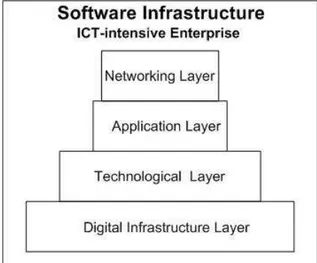
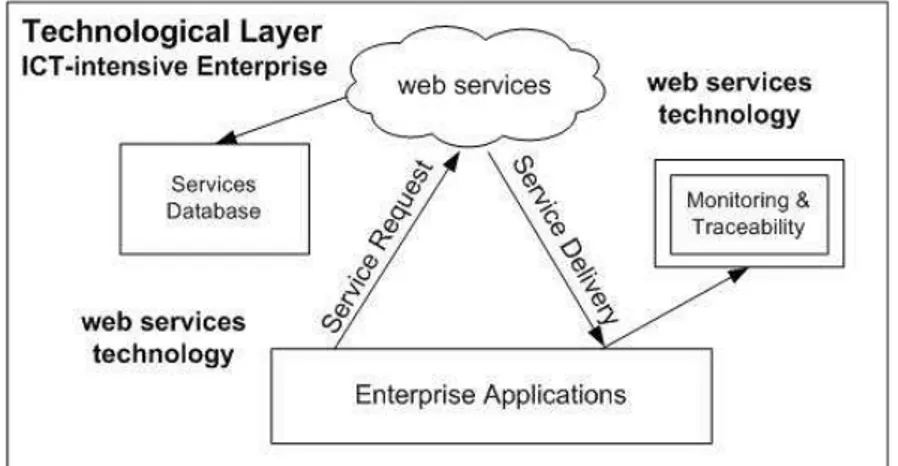
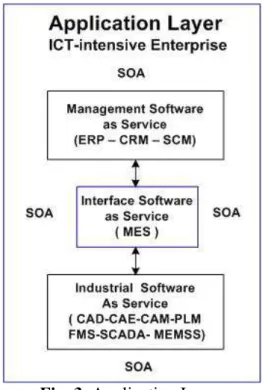
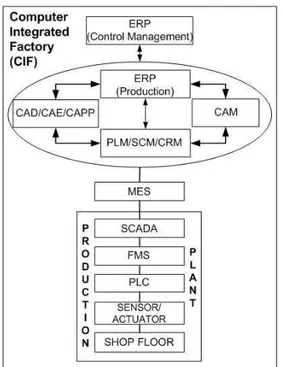
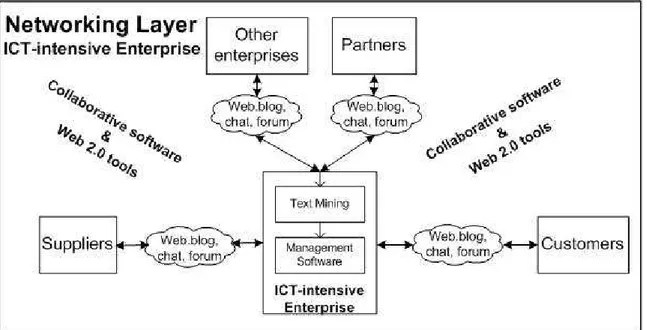
![Fig. 6. Text Mining By algorithms of Data Mining (DM) [18]](https://thumb-eu.123doks.com/thumbv2/123dok_br/16293646.185561/8.892.83.771.224.382/fig-text-mining-algorithms-data-mining-dm.webp)
